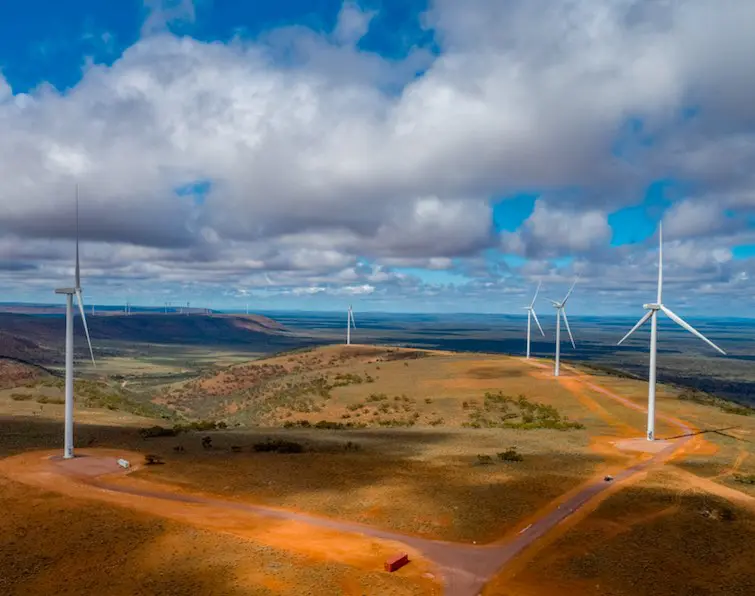

Irish-based smart grid technology company GridBeyond says it has raised €52.25 million ($A86 million) in a new funding round that will help it expand its virtual power plant business, including in Australia, and help customers match load with green energy output.
The Series C financing round was backed by led by Alantra’s Energy Transition Fund, Klima, and included new and returning investors such as Energy Impact Partners, Mirova, Act Venture Capital, ABB, Constellation and Yokogawa Electric Corp.
The Dublin-based GridBeyond has since 2010 been developing an AI platform that connects utility-scale and behind the metre renewables, battery storage, and energy demand load. It is part of a global push to make grid smarter and focus not just on the supply side but also optimising demand for periods when wind and solar output is at their highest.
The company operates in Ireland, the UK, Australia, the US and Japan, and is focused on markets where renewables are making headway and regulatory environments evolving to facilitate new technologies and approaches to managing the grid.
“We use artificial intelligence to allow us to optimise energy consumption based on the forecasts we have for renewables,” CEO and co-founder Michael Phelan told Renew Economy in an interview.
“What’s solar going to do? What’s the wind gonna do? What’s the grid generally going to do? What’s the load at a particular point in time, either on a local site or in even in house or something? What’s the need?
“In other words, if renewables are not going to meet the demand requirement, how can we optimise the assets we have, which are most likely going to be things like batteries and flexible loads and the likes. How can they be optimised to maximise the use of renewables really on the grid?”
Phelan says the use of AI is essential because of the speed and variability in energy markets like Australia.
“So there are a lot of decisions that need to be made very, very quickly on the grid,” he says.
“In Australia, for example, you run on a five minute market. So every five minutes the, the market operator has to make a decision as to whether supply and demand is matching.
“So our artificial intelligence systems allow us to forecast say renewable energy load, price and various things and then decide, based on all the things we’re seeing what the grid needs, to continue to balance over the next period of time.
“So we will decide whether we should be charging a battery depending on the state of the grid, discharging a battery, charging a load, another was driving a load maybe towards a lower temperature or something like that. So it can be turned off later on. So the artificial intelligence allows us to make that decision every five minutes.”
Phelan says GridBeyond is a specialist in helping industrial and commercial customers take advantage of their own flexible demand and match it with the output of their wind or solar resources, helped by battery storage and management devisies.
Consumers, he says, are driving the pace and scale of the transition.
“Let’s take a metals plant, or something like that. Their loads tend to be flexible, depending on what they’re trying to produce, and the quantity they’re trying to produce.
“So we will look at the production plan for the plant, and if they have a solar plant, we might look at the forecast for solar, we might look at battery capacity that they would have, they might have electrified some vehicles and things that we would look at the charging plan for those.
“And then we would optimise or we’d forecast all of that first and see what we think is going to happen, and what prices are looking like if they’re importing from the grid. And then we would optimise the whole thing and come up with the optimum solution tominimise the cost and minimise the carbon usage.
“The idea is to do 24/7 green power matching. So there’s lots of people out there today, who say we use green energy, we’ve used it for years. And what they’re doing is buying renewable certificates on a yearly basis and saying, Yeah, on a yearly basis, I bought enough renewable certificates to match my consumption.
“But that doesn’t really get you to the energy transition. (You need to) prove that your at least your supply and demand is clean is doing 24/7 power matching, and that’s the thing we’re looking at.”
Last of 640 battery packs installed at giant Collie facility, which was to be the…
Global giant behind giga-scale solar farm that will help power aluminium smelter says Australia among…
One developer has flipped a planned solar project with optional battery, into a proposed battery…
OpenSolar's Sophie Wright on the mission to streamline solar businesses so that more money and…
Origin says grid access win will trigger a $175m final payment for giant wind project,…
Santos has been given final approval to begin production at Australia’s dirtiest offshore gas field…